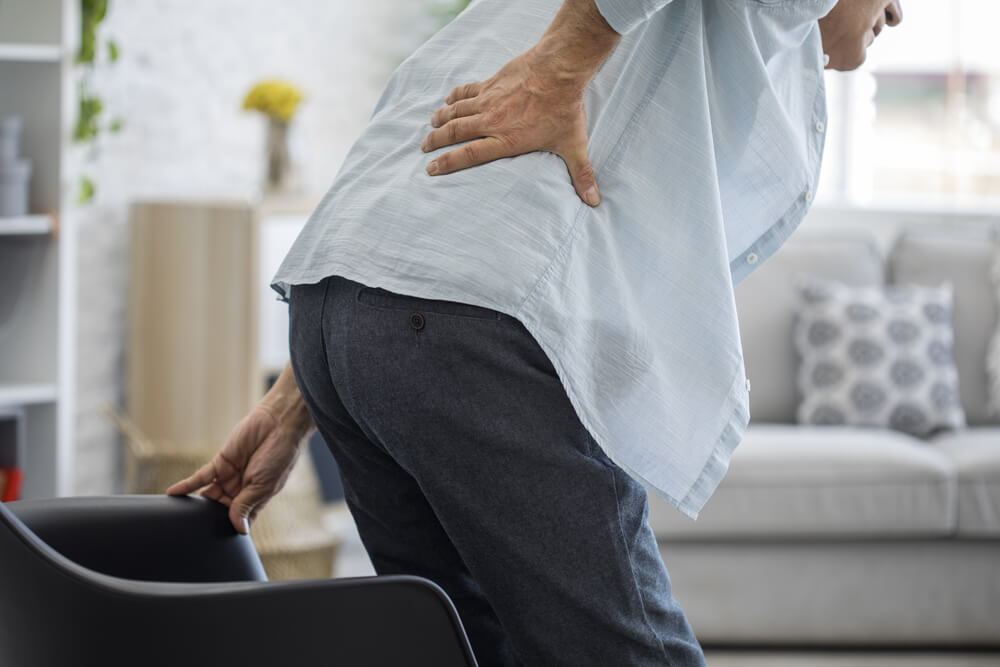Pain anywhere in your body can affect your quality of life, but pain in your lower back and upper buttocks can make it difficult to stand, walk or even sit. While it’s easy to just hope that it fades quickly on its own, that’s not always the case.
If you’re experiencing lower back and upper buttock pain that’s interfering with your daily routines, then it’s important to determine the cause of the ache so that it can be properly treated. Whether the pain comes from a sustained injury or a medical condition, getting answers about the ache is the first step to alleviating it.
We’ll discuss what it means to have lower back and upper buttock pain as well as the potential reasons for the ache. Then we’ll discuss possible treatments, including physical therapy.
The basics of lower back and upper buttock pain
Many people experience lower back pain every now and then. In fact, it has an 84% prevalence rate among the adult population, making it the most common musculoskeletal condition.
Your lower back is referred to as the lumbar region, which has five vertebrae and makes up the largest part of your spine. When you have lower back pain, it means that the ache is stemming from your lower rib to the upper buttocks.
Lower back and upper buttock pain can be associated with other symptoms. It often occurs with inflammation, numbness and tingling sensations.
Potential causes for lower back and upper buttock pain
If you’re feeling an ache in your lumbar region, there are a few possible reasons for the pain that aren’t a call for concern. For example, many people feel lower back and upper buttock pain if they’ve been sitting for an extended period of time. But there are other causes that may require further treatment, such as an injury or medical condition.
Here are some medical conditions that may be the reason for your lower back and upper buttock pain:
- Sciatica — One of the most common causes of lower back and upper buttock pain is sciatica, as your sciatic nerve starts in your lumbar region, runs through the buttocks and down the back of your legs to reach your feet. Sciatica occurs when there’s pressure on the nerve from a bone spur or herniated disc in the spine. It can cause sharp pain as well as weakness and tingling.
- Sacroiliitis — You have two joints that connect your spine to your pelvis, called sacroiliac joints. These large joints can become inflamed, causing pain in the lower back and upper buttocks, as well as your groin and legs. It can be caused by trauma, like a fall, as well as osteoarthritis.
- Poor posture — When you’re sitting for a while, it’s possible to feel temporary lower back and upper buttock pain. But it can become a consistent issue if you have poor posture while sitting, standing or walking around due to excessive pressure on your sciatic nerve and spinal column. The additional stress can come from incorrect form while lifting heavy objects or overextending your neck to look at your phone.
Physical therapy treatment options for lower back and upper buttock pain
Even though lumbar pain is common, that doesn’t mean that you should just grin and bear it. When your lower back and upper buttock pain is persistent or worsening, it’s time to take action. The good news is that there are plenty of physical therapy techniques that can help alleviate the ache and restore your mobility.
Your physical therapist will determine your treatments based on the severity and cause of your pain.
Here are a few techniques used by physical therapists to help lower back and upper buttock pain:
- Therapeutic exercises — One of the best ways to alleviate lumbar pain is by strengthening and stretching the affected muscles. A physical therapist will walk you through stretches and strengthening exercises that will help to reduce your pain as well as decrease the risk of future pain or injury by improving the overall function of the area. They may also recommend low-impact aerobics, such as biking and walking.
- Manual therapy — A physical therapist can use hands-on techniques, known as manual therapy, to target the exact area of your pain. For back pain, they can help increase the range of motion in your affected joints, such as the sacroiliac joints and the facet joints in your spine. One possible technique is joint mobilization, which helps them loosen up the joint by manipulating the surrounding tissue.
- Ergonomic training — Since poor posture is a potential cause for your pain, your physical therapist may utilize ergonomic training techniques. The goal is to help adjust your posture to alleviate excessive stress on your nerves and joints. They can also help you make modifications in your home or work environment that will decrease strain on your lower back during your everyday tasks.
Peak Performance can determine (and treat) the cause of lower back and upper buttock pain
When you’re experiencing lower back and upper buttock pain, it can make you want to do nothing but lie down and ignore all your responsibilities. Our physical therapists at Peak Performance Sports and Physical Therapy can not only help you pinpoint the reason behind your pain, but they can help you alleviate the pain and increase your mobility with effective techniques.
Contact us today for more information or to schedule an initial appointment.

